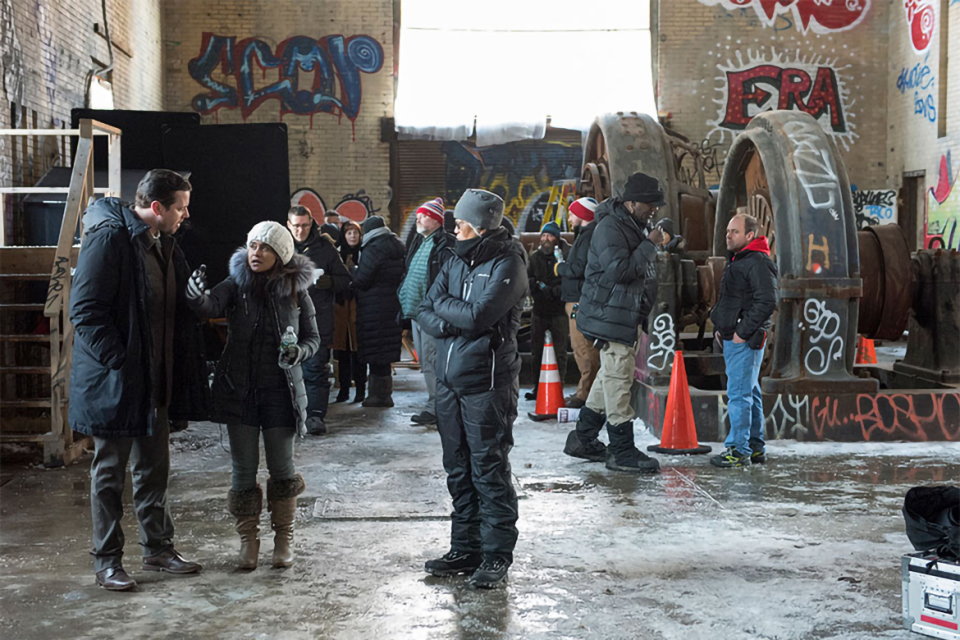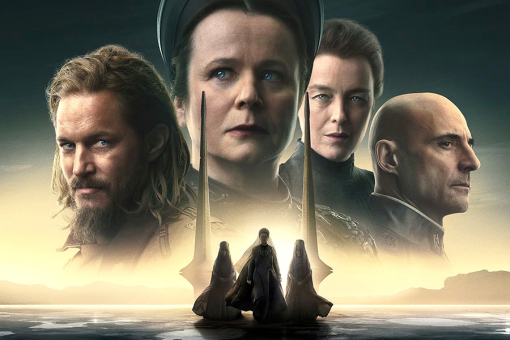In some ways, it's her mother's nightmares that drive Veena Sud to tell stories that sear the soul with scenes of violence and injustice, ever in search of redemption and a happier outcome.
Sud, creator of the Netflix series Seven Seconds, has made a career of telling crime dramas, first on the CBS procedural Cold Case, then in her adaptation of The Killing, an AMC series that was cancelled, then picked up by Netflix.
Seven Seconds takes a hard look at institutional racism through the story of a hit-and-run of an African-American teenager by a Jersey City cop, and the cover-up that ensues by the mostly white police force.
Her take on the dark side of life stems from a passion to right wrongs, born after listening to tales of horrendous experiences told to her as a child by her immigrant parents, a Filipino mother and an Indian father.
TelevisionAcademy.com recently spoke with Sud about the influences on her work, what she strives for as a female showrunner, and what she hopes audiences will get out of watching Seven Seconds.
What made you decide to go into television as a career?
I fell in love with TV when I was a kid. I watched M*A*S*H and Hill Street Blues, and saw how they told uncomfortable, but necessary truths.
When I was an undergrad at Barnard College, I audited a senior film class at Columbia University, and was the only woman of color in the group. I wanted to study film, but felt I didn't belong in that world. The written word continued to interest me, so I started writing for the school paper. Then I began to explore political movements, and ended up with a double major in political science and women's studies.
So storytelling remained important to you.
Yes. I went to work in radio, for WBAI in New York, for a while. I did a program on the Asian Pacific region and Asian-American culture in New York, which was great for a few years. I also did some work for the media watchdog group, Fairness and Accuracy in Reporting. But I wasn't long for journalism.
I became the distribution director for Third World Newsreel, a media distribution company, and would sit there watching activists and people of color taking charge of their stories. They did great documentary work, which inspired me to make a few short films that got into film festivals. I decided to go back to my original dream, and in 1996, I got a scholarship to New York University's film school.
Was it hard going back to school?
It was tough. I was a single mom raising my son, and was the only parent in my class. I didn't have the luxury of time anymore. I became very focused, and had help from my mom and in-laws.
After graduating, I was able to start working as a director in reality TV, and met Tom Fontana, who created Oz for HBO. He invited me to visit the set, and I realized this was the type of quality TV that I wanted to do. So I wrote an Oz spec for the Disney| ABC Writing Program, and won a fellowship. I moved to L.A. in 2002, and after the fellowship, was able to get on Push, Nevada, then Cold Case.
What led to your becoming a showrunner?
I worked for Meredith Stiehm, a female showrunner on Cold Case, who gave me every opportunity to succeed. The lead character on the show was a female detective who took herself and her job seriously. So it was a unique situation.
After working three years on the show, Meredith asked if I wanted to take over for her. She said, "You can write the series. Now all you have to do is manage the people." It was something I really wanted, so I ran the show for two years, dealing with the set, executives, ratings, and everything from wardrobe to budget. I loved it.
The Killing gave you a chance to put your own artistic stamp on a show. Talk about the influences that led to focusing on humanity's darker side in your work.
Both my parents are immigrants who went through World War II. They talked about unspeakable things that people can do to each other. I was an impressionable child, and there's something that happens to you when you're exposed to that kind of talk when you're so young. There's a desperate longing to figure out how people come back from those kinds of experiences.
My mom was a toddler when she, her sister and her mother were tortured in the Philippines by Japanese soldiers. Even though my mother was so young, she grappled with nightmares. She would dream of being chased by soldiers, but in the dreams, she was able to get to the top of the mountain and fly away. She kept having those dreams until she passed away in 2013.
Now you've got Seven Seconds on Netflix. How did this series idea emerge?
I've always been drawn to material that explores the darker part of human nature. As I thought about another series, each time I turned on the TV, it felt like I was just seeing my fellow citizens of color being shot down. It was Michael Brown in Ferguson, Mo. (Aug. 9, 2014), Tamir Rice in Cleveland (Nov. 22, 2014), Freddie Gray in Baltimore (April 12, 2015). I knew I had to write something about police violence and people of color being killed.
What kind of research did you do for the series?
My research for the pilot and for Season One with the writers included speaking with parents who lost their sons to police violence. We talked to four moms who spoke about the day their child was killed, what they went through in the seconds and hours and days after the terrible event; how they were re-traumatized by a police department that closed ranks against them, then demonized their children, making the victim the criminal.
We also interviewed police officers, assistant district attorneys throughout the U.S., and a civil litigator in North Carolina who worked with families who lost loved ones to police brutality. We went to the morgue on day one of the writers room. I wanted to make sure that we knew what we were dealing with, what death looked like, smelled like, and that we respected the dead and those they left behind.
How have opportunities to write shows for streaming services changed the industry landscape?
Traditional programming and what airs on broadcast networks are limited. Netflix and other streaming services are offering storytellers a giant terrain where so many different stories can be told. They can track how stories are received, so it's no longer just a few people determining what America watches. There's now data that can show a demand for more diverse storytelling.
Have we reached a tipping point now that sexual harassment claims have toppled the careers of several well-known male industry players?
Doors have opened. It's such a pleasure to see what has happened in the last two years with #OscarSoWhite and #MeToo. The executives and the power structure are still the same. Eighty percent of writers rooms are still white. But people are listening now. Sexual harassment is not acceptable anymore.
It's critical that all of us – women showrunners, showrunners of color, white showrunners – tell the stories that mirror who our country truly is. Today's America isn't MAGA land. We are majority female, and a country that's 40 percent people of color. Isn't it time that Hollywood reflect this and not the "pretend America" that the dude in the White House wishes still existed? We all have a part in telling this story, the real story of who are as a country.
What do you hope audiences will get from watching Seven Seconds?
I want people to see the desperate need for change, and to be motivated enough to do something to make a difference.















